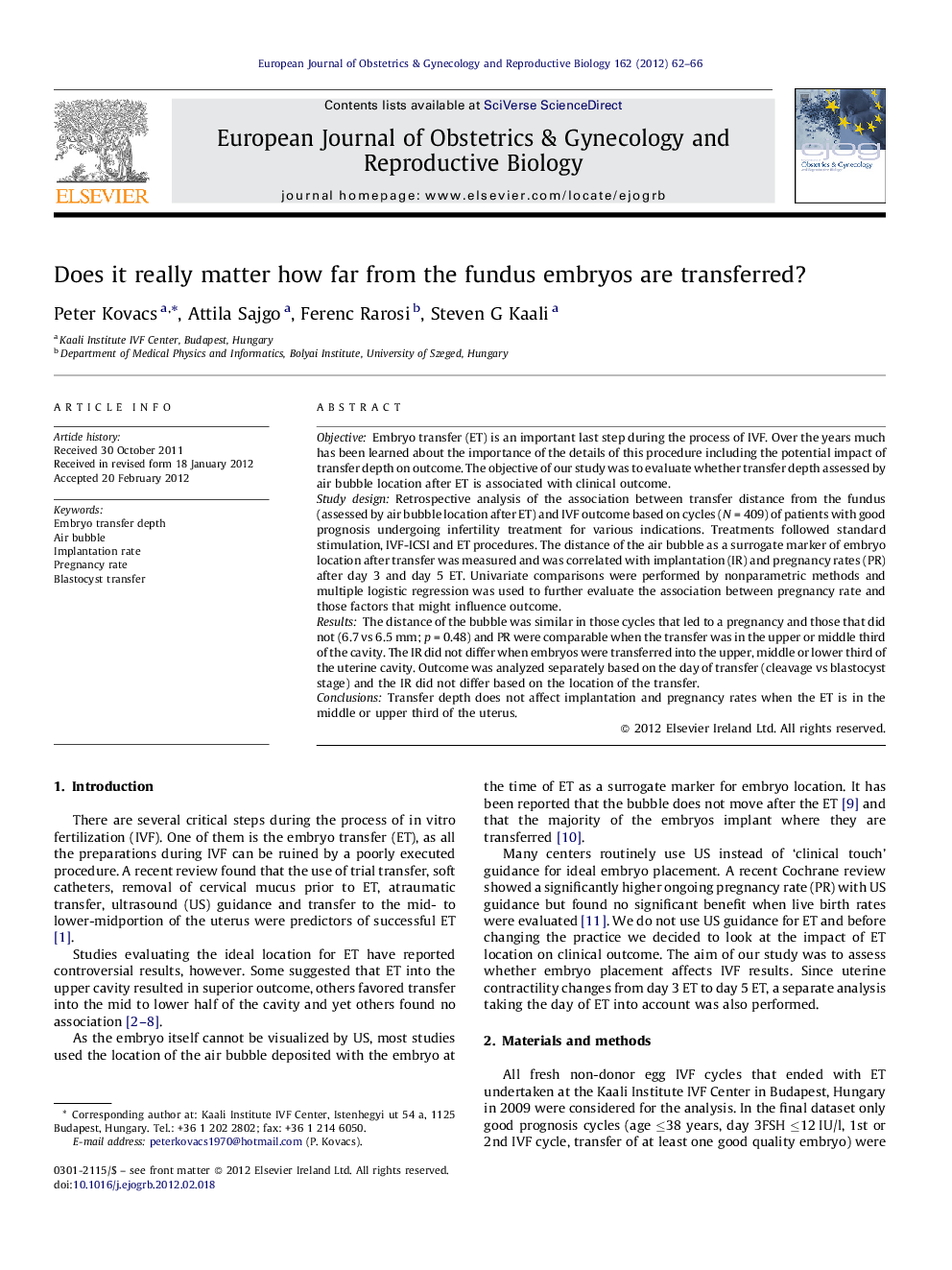| Article ID | Journal | Published Year | Pages | File Type |
|---|---|---|---|---|
| 3920610 | European Journal of Obstetrics & Gynecology and Reproductive Biology | 2012 | 5 Pages |
ObjectiveEmbryo transfer (ET) is an important last step during the process of IVF. Over the years much has been learned about the importance of the details of this procedure including the potential impact of transfer depth on outcome. The objective of our study was to evaluate whether transfer depth assessed by air bubble location after ET is associated with clinical outcome.Study designRetrospective analysis of the association between transfer distance from the fundus (assessed by air bubble location after ET) and IVF outcome based on cycles (N = 409) of patients with good prognosis undergoing infertility treatment for various indications. Treatments followed standard stimulation, IVF-ICSI and ET procedures. The distance of the air bubble as a surrogate marker of embryo location after transfer was measured and was correlated with implantation (IR) and pregnancy rates (PR) after day 3 and day 5 ET. Univariate comparisons were performed by nonparametric methods and multiple logistic regression was used to further evaluate the association between pregnancy rate and those factors that might influence outcome.ResultsThe distance of the bubble was similar in those cycles that led to a pregnancy and those that did not (6.7 vs 6.5 mm; p = 0.48) and PR were comparable when the transfer was in the upper or middle third of the cavity. The IR did not differ when embryos were transferred into the upper, middle or lower third of the uterine cavity. Outcome was analyzed separately based on the day of transfer (cleavage vs blastocyst stage) and the IR did not differ based on the location of the transfer.ConclusionsTransfer depth does not affect implantation and pregnancy rates when the ET is in the middle or upper third of the uterus.
